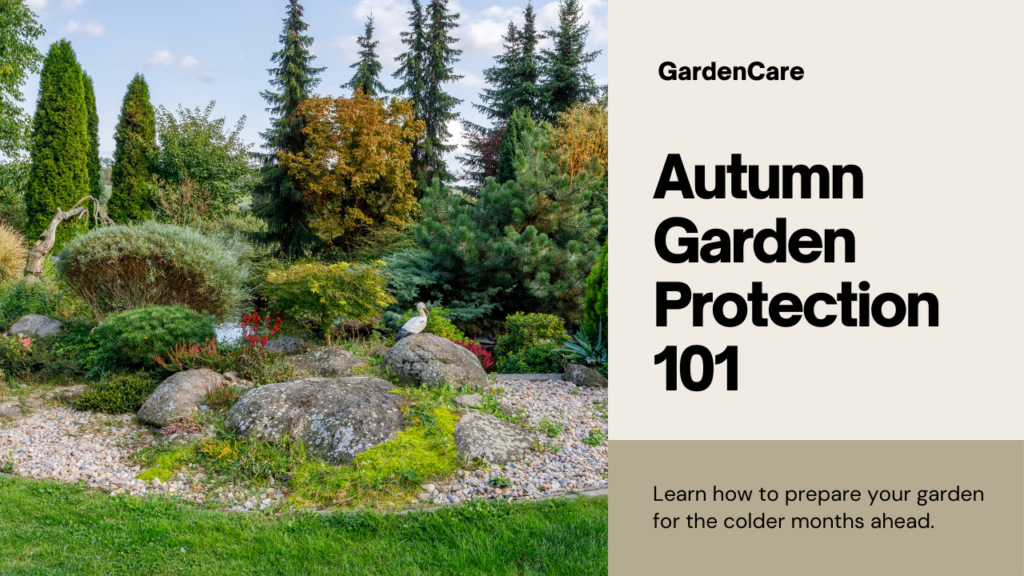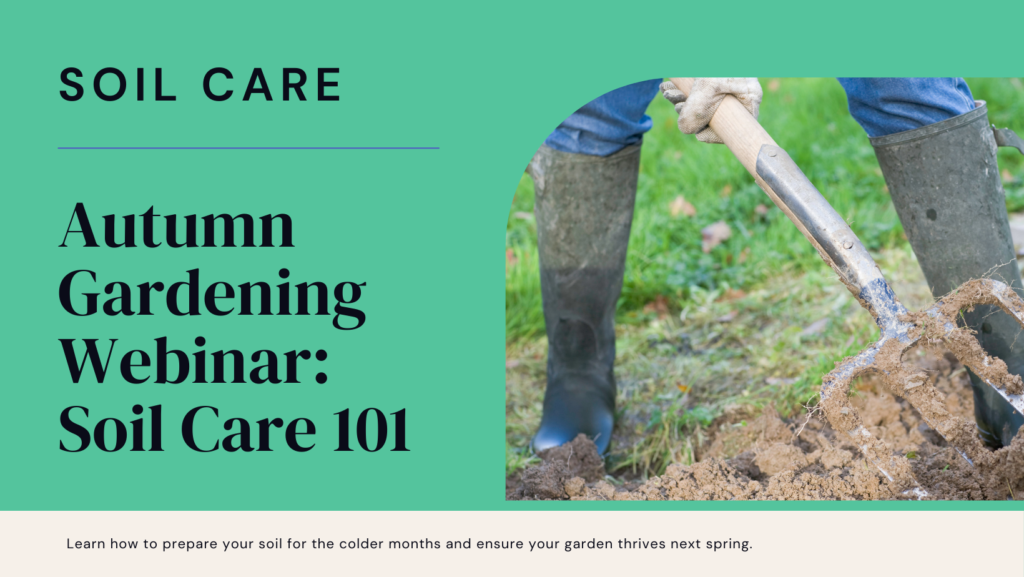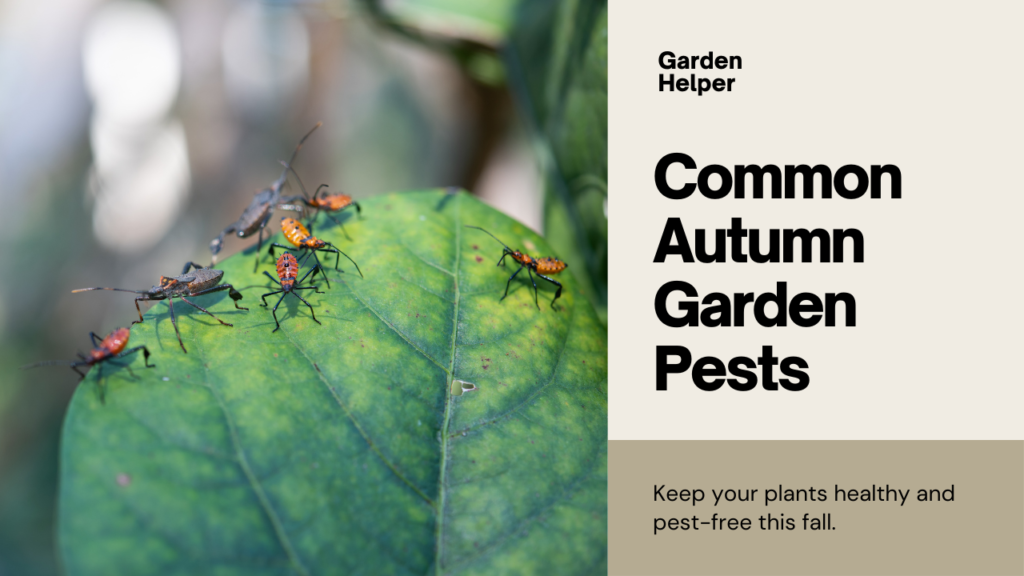
Welcome to our comprehensive guide on autumn gardening. As the vibrant colors of summer start to fade, it’s time to turn our attention to nurturing our gardens during the fall season. In this section, we’ll provide you with expert advice and essential tips to ensure your garden thrives throughout autumn. From preparing your garden for the changing weather to protecting your plants from frost and pests, we’ll cover everything you need to know to maintain a beautiful and flourishing garden.
Key Takeaways:
- Discover essential tips for preparing your garden for fall
- Learn about the best plants to grow in autumn and how to care for them
- Find out effective methods to protect your garden from frost and strong winds
- Understand the importance of soil care during the autumn season
- Get insights on pruning and trimming techniques to maintain the shape and health of your plants
Essential autumn gardening tasks
To ensure a successful autumn season for your garden, there are a few essential tasks that you need to carry out. By taking the time to prepare your garden for fall and planting autumn-friendly crops, you can set the stage for a vibrant and thriving outdoor space. Let’s walk you through each step:
Preparing Your Garden for Fall
Before the cool breeze of autumn sets in, it’s crucial to prepare your garden for the changing season. This involves cleaning up your garden, removing summer annuals, and getting the soil ready for autumn planting. Take time to tidy up any debris, trim back overgrown plants, and clear out weeds. This will help create a clean canvas for your autumn garden.
Planting Autumn-Friendly Crops
Autumn is the perfect time to introduce a variety of crops that thrive in cooler temperatures. From crisp vegetables to colorful flowers, there’s a wide range of options for your autumn garden. Choose crops such as kale, lettuce, carrots, pansies, and asters, as they are well-suited for the fall season. Make sure to follow planting instructions for each crop, providing the proper spacing and watering regimes to ensure healthy growth.
Tip: Remember to check your local climate and hardiness zone to determine the most suitable crops for your area.
By completing these essential autumn gardening tasks, you will create a solid foundation for a successful garden throughout the fall season. Embrace the beauty and bounty of autumn with a well-prepared and thoughtfully planted garden.
| Crop | Planting Time | Spacing | Special Care |
|---|---|---|---|
| Kale | Late summer | 12-18 inches apart | Provide consistent moisture |
| Lettuce | Early to mid-fall | 6-8 inches apart | Protect from excessive heat |
| Carrots | Late summer to early fall | 2-3 inches apart | Keep soil consistently moist |
| Pansies | Early to mid-fall | 6-8 inches apart | Provide regular deadheading |
| Asters | Early fall | 12-18 inches apart | Protect from frost |
Preparing your garden for fall
As autumn approaches, it’s important to begin preparing your garden for the changing season. Taking the time to clean up your garden, remove summer annuals, and prepare the soil for autumn planting will ensure that your garden thrives during this time of transition.
Cleaning Up Your Garden
Start by tidying up your garden to remove any debris, fallen leaves, and dead plants. Rake the leaves and clear them away to prevent them from smothering the grass or becoming a hiding place for pests. Make sure to clean out your garden beds and borders, removing any weeds or spent plants.
By cleaning up your garden, you’ll create a fresh canvas for planting new autumn blooms and vegetables. It also helps to reduce the risk of pests and diseases from overwintering in your garden.
Removing Summer Annuals
Before the first frost arrives, it’s time to bid farewell to your summer annuals. These plants are not frost-tolerant and won’t survive the colder temperatures. Gently uproot them from your garden, being careful not to disturb any neighboring perennials or bulbs.
Consider composting the remains of your summer annuals to enrich your garden soil for future planting. You can also save seeds from your favorite annuals to sow next spring.
Preparing the Soil for Autumn Planting
Preparing your soil for autumn planting is crucial to ensure the success of your next crop. Start by testing the pH level of your soil using a home testing kit or by sending a sample to a local agricultural extension service. This will help you determine if any amendments are needed to create the ideal growing conditions for your plants.
Once you know the pH level, you can adjust it by adding organic matter or specific soil amendments such as lime or sulfur. Incorporate these amendments into the soil using a garden fork or tiller to ensure they are well mixed.
Mulching plays a vital role in protecting your garden during the fall season. Apply a layer of organic mulch, such as straw or shredded leaves, around your plants to insulate them from extreme temperature fluctuations and help retain moisture.
Now that you’ve learned the essential steps for preparing your garden for fall, you’re ready to embrace the beauty and abundance of the autumn season. With a clean garden, removed summer annuals, and properly amended soil, you’ll be well-prepared for successful autumn planting.
“Autumn is a second spring when every leaf is a flower.” – Albert Camus
Recommended Soil Amendments for Common pH Levels
| pH Level | Recommended Amendments |
|---|---|
| Acidic (pH | Lime, wood ash |
| Neutral (pH 6-7) | Compost, well-rotted manure |
| Alkaline (pH > 7) | Sulfur, peat moss |
Note: It’s important to accurately determine your soil’s pH level through testing before applying any amendments.
Planting autumn-friendly crops

When it comes to autumn gardening, choosing the right crops can make all the difference in the success of your harvest. Whether you’re a seasoned gardener or a beginner, planting autumn-friendly crops ensures that you can continue to enjoy the beauty and bounty of your garden well into the cooler months.
Autumn offers a range of crops that thrive in the changing weather conditions. From vibrant vegetables to delightful flowers, there’s something for every gardener’s taste. The key is to select crops that can withstand the lower temperatures and shorter daylight hours characteristic of the season.
Here are some top choices for your autumn garden:
- Lettuce: This leafy green vegetable thrives in the cool temperatures of autumn. With a variety of colors and flavors to choose from, you can create a stunning salad garden right in your backyard.
- Kale: Known for its nutritional value, kale is a hardy crop that can withstand light frosts. Its rich, earthy flavors make it a versatile addition to soups, smoothies, and salads.
- Radishes: These crisp, peppery root vegetables are quick to mature, making them an ideal choice for autumn planting. With their vibrant colors and crunch, they bring a refreshing taste to any meal.
- Mums: As summer gives way to fall, mums add a splash of color to your garden. These hardy flowers come in various hues and can withstand cooler temperatures, brightening up your outdoor space.
Once you’ve selected your crops, it’s essential to follow proper planting techniques to ensure their successful growth. Here are a few tips to get you started:
- Prepare the soil: Before planting, make sure your soil is well-drained and fertile. Clear away any debris or weeds and add organic matter to enrich the soil.
- Follow spacing guidelines: Different crops require specific spacing to allow for proper air circulation and root growth. Refer to seed packets or plant labels for recommended spacing.
- Water adequately: Provide your crops with regular watering, making sure not to overwater or underwater. Aim for soil moisture that is consistently damp but not waterlogged.
- Monitor for pests: Keep an eye out for common autumn pests such as aphids and caterpillars. Use organic pest control methods to protect your crops.
Remember, successful autumn gardening is not just about planting the right crops; it’s also about providing them with proper care and maintenance throughout the season. By following these tips, you’ll be well on your way to growing a vibrant and thriving autumn garden.
“Autumn is a second spring when every leaf is a flower.” – Albert Camus
So, roll up your sleeves and start planting those autumn-friendly crops. The beauty and rewards of a flourishing garden await you.
| Crop | Recommended Spacing | Planting Depth | Days to Harvest |
|---|---|---|---|
| Lettuce | 6-12 inches | 1/4 inch | 40-60 days |
| Kale | 12-18 inches | 1/2 inch | 55-75 days |
| Radishes | 2-4 inches | 1/2 inch | 20-30 days |
| Mums | 12-18 inches | N/A | N/A |
Table: Recommended spacing, planting depth, and days to harvest for autumn-friendly crops.
Protecting your garden in autumn

As autumn approaches, it’s important to take proactive measures to protect your garden from the challenges that this season brings. From unpredictable weather conditions to potential damage caused by frost and winds, safeguarding your plants becomes crucial for their survival. In this section, we’ll explore effective methods to protect your garden, ensuring its health and longevity throughout the autumn months.
Protecting Against Frost
Frost can be detrimental to your plants, causing wilting, browning, and even death. To shield your garden from frost, consider the following:
- Cover delicate plants with frost blankets or garden fabric to provide insulation.
- Strategically place containers near walls or under tree canopies for added protection.
- Water your plants thoroughly in the evening to keep the soil moist, as this can help moderate the temperature.
By implementing these measures, you can safeguard your plants from the freezing temperatures that autumn brings.
Protecting Against Strong Winds
Strong winds can wreak havoc on your garden, causing branches to snap and plants to become uprooted. Here are some techniques to shield your garden from strong winds:
- Install windbreaks, such as trellises or fences, to create a barrier that diverts the wind away from your plants.
- Secure tall plants and trees with stakes or ties to provide additional support.
- Group potted plants closely together to create a microclimate that reduces wind exposure.
By employing these strategies, you can minimize the impact of strong winds on your garden and ensure the well-being of your plants.
“Protecting your garden from the challenges of autumn is paramount to maintaining its beauty and vibrancy.”
| Frost Protection Methods | Effectiveness |
|---|---|
| Covering plants with frost blankets | High |
| Positioning containers near walls or under canopies | Medium |
| Thorough evening watering to keep soil moist | Low |
Table: Effectiveness of frost protection methods for your garden in autumn
Remember, protecting your garden in autumn is essential to ensure its resilience and longevity. By implementing frost protection techniques and safeguarding against strong winds, you can preserve the beauty and health of your plants throughout the season.
Soil care in autumn

Taking care of your soil during the autumn season is crucial for maintaining a healthy and productive garden. By paying attention to soil testing, amendments, mulching, and composting, you can ensure that your plants receive the necessary nutrients and maintain optimum growth.
Soil testing
Before making any amendments or applying fertilizers, it’s important to conduct a soil test to determine the nutrient levels and pH balance of your soil. This will help you understand the specific needs of your plants and enable you to provide them with the right nourishment. Soil testing kits are readily available at most gardening centers, or you can send a sample to a local cooperative extension for analysis.
Amendments
Based on the results of your soil test, you may need to make amendments to adjust the pH level or supplement specific nutrients. Adding organic matter such as compost, well-rotted manure, or leaf mold can improve the structure and fertility of your soil. Additionally, incorporating lime or sulfur can help balance the pH level, ensuring optimal nutrient availability for your plants.
Mulching
Mulching is an essential step in soil care during autumn. It helps regulate soil temperature, conserves moisture, and suppresses weed growth. Spread a layer of organic mulch, such as shredded leaves or straw, around your plants, leaving a gap around the stems to prevent rot. This layer will also break down over time, enriching the soil with valuable organic matter.
Composting
Autumn is the perfect time to start a compost pile or enhance an existing one. Collect fallen leaves, vegetable scraps, and garden debris to create a nutrient-rich compost that can be used to enrich your soil in the future. Turn the compost regularly to accelerate decomposition, and remember to balance the carbon-to-nitrogen ratio by adding both “green” (nitrogen-rich) and “brown” (carbon-rich) materials.
Implementing these soil care practices in autumn will ensure that your garden soil remains fertile and provides the necessary nutrients for your plants. By taking care of your soil, you’re setting the foundation for a thriving and beautiful garden.
Continue reading to learn about pruning and trimming techniques to maintain the shape and health of your plants in autumn.
Pruning and trimming guide for autumn
Proper pruning and trimming are essential tasks to maintain the health, shape, and aesthetics of your garden during the autumn season. By following the right techniques, you can promote healthy growth, remove dead or damaged branches, and enhance the overall appearance of your trees, shrubs, perennials, and roses.
Here are some guidelines for pruning and trimming in autumn:
1. Assess the Health of the Plant
Before you start pruning, carefully examine the plants to identify any signs of disease or infestation. Look for discolored leaves, wilting, or unusual growth patterns. If you spot any issues, consult a local gardening expert or arborist for guidance.
2. Use the Right Tools
Ensure you have the proper tools for pruning and trimming, such as sharp bypass secateurs, loppers, and pruning saws. Clean and sanitize the tools before each use to prevent the spread of diseases.
3. Focus on Dead and Diseased Branches
Begin by removing dead, damaged, or diseased branches. Make clean cuts just outside the branch collar, avoiding leaving any stubs. This will help prevent the entry of pathogens and promote healing.
4. Trim Overgrown Branches
If you have any overgrown branches that are obstructing pathways or structures, trim them back to maintain a safe and tidy garden. Make sure to follow the natural shape of the plant and avoid excessive pruning.
5. Shape Shrubs and Hedges
Trim shrubs and hedges to maintain their shape and density. Use a hedge trimmer or handheld shears to achieve the desired form. Remember to remove any inward-growing or crossing branches that may hinder healthy growth.
6. Deadhead Perennials and Roses
Remove spent flowers from perennials and roses to encourage new growth and prolong the blooming season. Cut back the stems to a leaf node or healthy bud. This will redirect the plant’s energy toward producing more flowers.
7. Timing Matters
Keep in mind that different plants have varying pruning requirements. Some plants should be pruned in early autumn, while others may benefit from pruning in late winter or early spring. Research the specifics for each plant to ensure optimal timing.
8. Dispose of Pruned Material Properly
Dispose of pruned branches, leaves, and other garden debris responsibly. Compost or mulch organic material, and if necessary, arrange for appropriate disposal methods for diseased or infested plant parts.
Pruning is an art that requires careful consideration and knowledge of each plant’s growth habits. It’s always best to consult local gardening resources or seek professional advice when in doubt.
By following this pruning and trimming guide for autumn, you can ensure the health and beauty of your plants as they prepare for the colder months.
Pruning and Trimming Recommendations for Different Plant Types
| Plant Type | Pruning Technique |
|---|---|
| Trees | Remove dead and diseased branches, thin out dense growth, and maintain a balanced canopy. |
| Shrubs | Trim to shape, remove dead wood, and rejuvenate overgrown shrubs through selective pruning. |
| Perennials | Deadhead spent flowers, cut back stems to promote new growth, and divide overcrowded plants if necessary. |
| Roses | Remove dead and diseased wood, prune for shape and airflow, and cut back long canes to prevent winter damage. |
Autumn pests and diseases management
As the autumn season sets in, it’s important to be vigilant about the common pests and diseases that can wreak havoc on your garden. By identifying these issues early on and implementing effective prevention and treatment methods, you can ensure the health and vitality of your plants throughout the season. Here are some key pests and diseases to watch out for:
Fungal Infections
- Powdery mildew
- Leaf spot
- Rust
- Botrytis blight
- Root rot
Prevention and Treatment: To prevent fungal infections, maintain good airflow in your garden by spacing plants appropriately. Remove and destroy infected plant material and avoid overhead watering. Fungicides can be used as a treatment, following the instructions provided.
Common Garden Pests

- Aphids
- Snails and slugs
- Spider mites
- Caterpillars
- Whiteflies
Prevention and Treatment: Encourage natural predators like ladybugs and lacewings to control pest populations. Regularly inspect your plants for signs of infestation and promptly remove pests if detected. Organic insecticides can be used as a last resort, taking care to follow the instructions.
Proper pest and disease management is crucial to maintaining the overall health of your garden in autumn.
Remember, prevention is key when it comes to managing pests and diseases. By practicing good garden hygiene, regularly inspecting your plants, and taking appropriate measures, you can minimize the risk of infestations and keep your garden thriving.
| Pest or Disease | Description | Prevention | Treatment |
|---|---|---|---|
| Powdery mildew | A fungal infection characterized by a powdery white coating on leaves and stems. | Ensure proper spacing between plants, provide adequate air circulation, and avoid overhead watering. | Remove infected plant parts and apply fungicides as needed. |
| Aphids | Small, soft-bodied insects that feed on plant sap, causing leaf curling and stunted growth. | Attract beneficial insects, like ladybugs, and regularly inspect plants for early signs of infestation. | Handpick aphids or use organic insecticides as a last resort. |
| Snails and slugs | Moisture-loving pests that chew holes in leaves and can decimate young seedlings. | Remove debris and create barriers, such as crushed eggshells or copper tape, to deter them. | Handpick and dispose of them or use organic slug and snail baits. |
| Caterpillars | The larvae of moths and butterflies that feed on leaves, often causing significant damage. | Encourage natural predators like birds and install netting to protect vulnerable plants. | Handpick caterpillars or use organic insecticides as a last resort. |
Keeping your garden free from pests and diseases requires proactive management and regular observation. Pay attention to your plants’ health, provide proper care and nutrition, and take swift action when dealing with any issues that arise. By doing so, you can ensure a successful and bountiful autumn season in your garden.
FAQ
Q. What are some essential autumn gardening tasks?
A. Essential autumn gardening tasks include preparing your garden for fall, planting autumn-friendly crops, protecting your garden from frost and strong winds, taking care of your soil, and pruning and trimming your plants.
Q. How do I prepare my garden for fall?
A. To prepare your garden for fall, start by cleaning up your garden and removing any summer annuals. Prepare the soil by adding compost and organic matter. This will help improve the soil’s health and fertility for the next planting season.
Q. What are some autumn-friendly crops I can plant?
A. Some popular autumn-friendly crops include cabbage, kale, lettuce, spinach, radishes, carrots, and garlic. These crops thrive in cooler temperatures and can be harvested throughout the fall season.
Q. How can I protect my garden from frost?
A. To protect your garden from frost, you can use various methods such as covering your plants with frost blankets or individual plant covers. You can also create a microclimate by using mulch around plants to help retain heat.
Q. How do I safeguard my garden from strong winds?
A. To safeguard your garden from strong winds, you can install windbreaks such as fences or hedges. Another option is to stake tall plants or use plant supports to prevent them from toppling over.
Q. What soil care practices should I follow in autumn?
A. In autumn, it’s important to perform soil testing to determine its pH level and nutrient content. Based on the test results, you can amend the soil with appropriate nutrients. Additionally, consider applying a layer of mulch to insulate the soil and reduce weed growth.
Q. How should I prune and trim my plants in autumn?
A. In autumn, you should focus on trimming trees and shrubs to remove dead or diseased branches. For perennials and roses, prune them back to promote new growth in the following season. Remember to use sharp tools and follow proper pruning techniques.
Q. What are some common autumn pests and diseases in gardens?
A. Common autumn pests include aphids, snails, and slugs. Diseases such as powdery mildew and leaf spot can also affect plants during this season.
Q. How can I prevent and treat plant diseases in autumn?
A. To prevent plant diseases in autumn, practice good garden hygiene by removing any diseased plant material and ensuring proper air circulation. Some treatments for plant diseases include using organic fungicides and applying cultural practices like watering in the morning to allow foliage to dry.
Conclusion
In conclusion, by following these autumn gardening tips, you can nurture your garden to thrive even as the weather grows colder. From preparing your garden for fall to protecting it from frost, winds, and pests, each step will contribute to a vibrant and resilient autumn garden. Embrace the beauty of the season and enjoy the rewards of your careful gardening efforts.
















